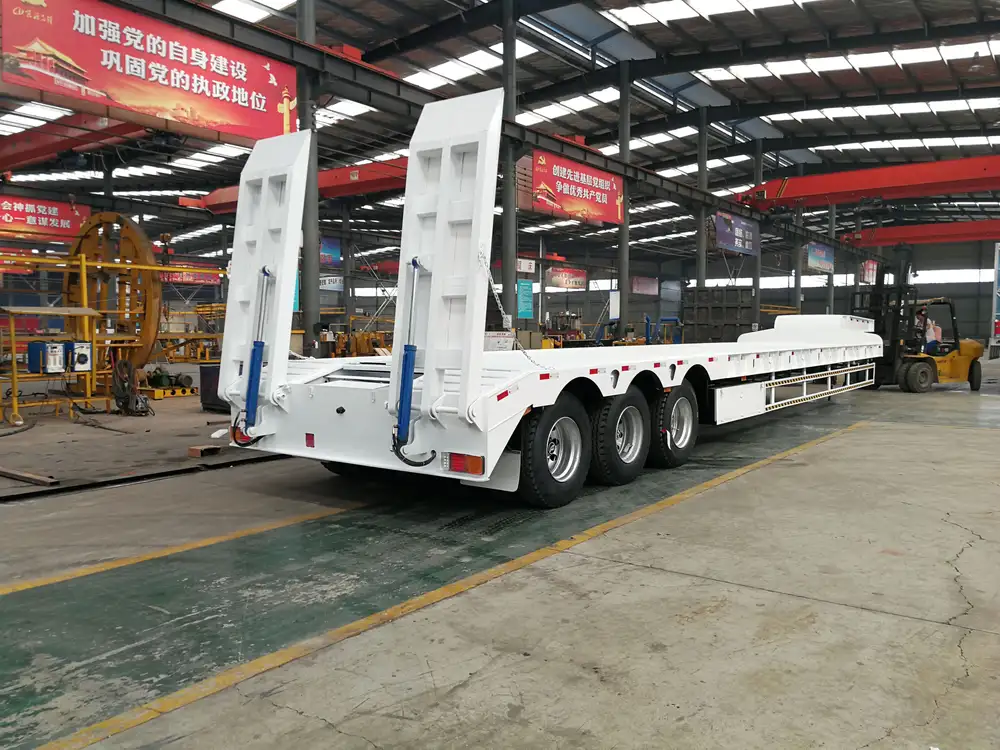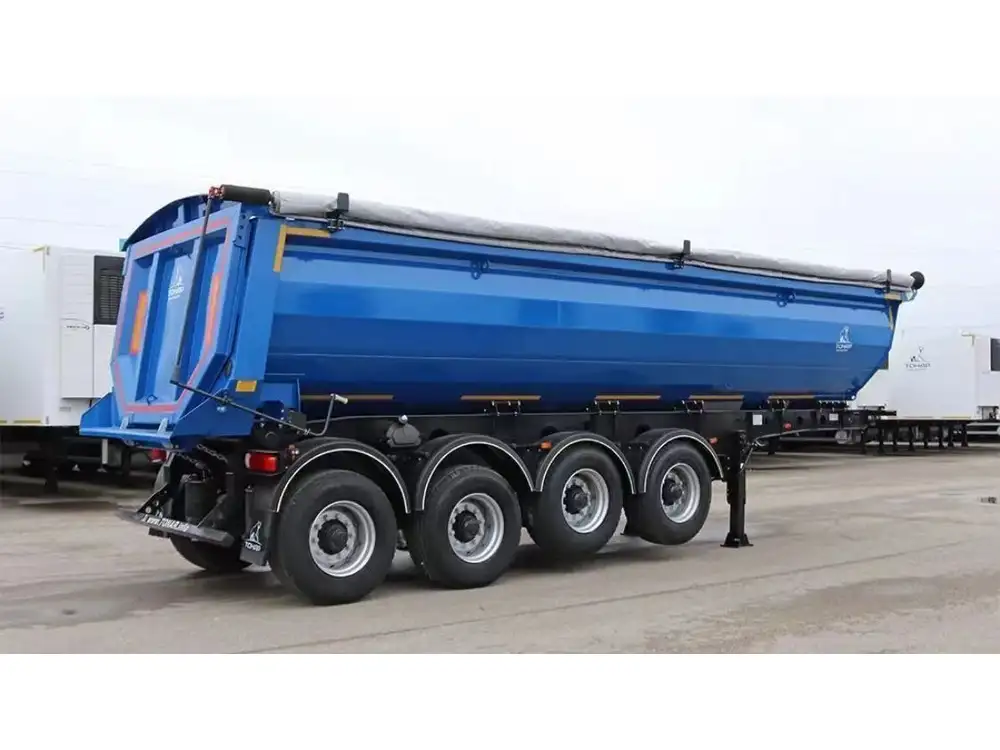Wiring a dump trailer solenoid is a critical task that ensures the efficient operation of your trailer’s hydraulic system. Understanding the wiring process enables you to maintain your trailer effectively while avoiding potentially costly repair jobs or dangerous mishaps. In this guide, we delve deep into the intricacies of wiring a dump trailer solenoid, covering everything from necessary tools and materials to step-by-step wiring instructions. Our objective is to provide you with rich, detailed insights that enhance your understanding and execution of this mechanical endeavor.
Table of Contents
- Understanding the Solenoid
- 1.1 What is a Solenoid?
- 1.2 The Role of a Solenoid in a Dump Trailer
- Essential Tools and Materials
- Safety Precautions
- Step-by-Step Wiring Process
- 4.1 Preparing the Trailer
- 4.2 Wiring the Solenoid
- 4.3 Connecting the Battery
- 4.4 Testing the Setup
- Troubleshooting Common Issues
- Maintenance Tips
- Conclusion
1. Understanding the Solenoid

1.1 What is a Solenoid?
A solenoid is a coil of wire that acts as an electromagnet when an electric current passes through it. In the context of dump trailers, solenoids control the hydraulic system, enabling the lifting and lowering of the trailer bed. By understanding how the solenoid operates, you can appreciate its vital importance to the functioning of your dump trailer.
1.2 The Role of a Solenoid in a Dump Trailer
In essence, the solenoid serves as a switch that activates the hydraulic pump. When you engage the trailer’s lift switch, the electrical current flows through the solenoid, allowing fluid to move into the hydraulic cylinder, which raises the bed of the trailer. Proper wiring ensures that this process is efficient and minimizes the risk of electrical failures or leaks.
2. Essential Tools and Materials
Before diving into the wiring process, gather the following tools and materials to streamline the task:
| Tool/Material | Purpose |
|---|---|
| Wire Strippers | To strip wires for connections |
| Crimping Tool | Used for securing wire connectors |
| Electrical Tape | To insulate and protect connections |
| Heat Shrink Tubing | For additional insulation |
| Multimeter | To test electrical connections |
| Two-Hole Solenoid Relay | Control the flow of electricity |
| 12V Battery | Power source for testing |
| Wire Connectors | For connecting wires securely |
| Basic Hand Tools (screwdriver, wrench, etc.) | General assembly/removal tools |

3. Safety Precautions
Prioritize safety before starting any electrical work. Adhere to the following guidelines:
- Disconnect the Battery: Ensure that the power source is off before beginning any work to prevent electric shock.
- Wear Safety Gear: Use goggles and gloves to protect against electrical hazards.
- Work in a Ventilated Area: Proper ventilation is necessary to dissipate any fumes or gases released during the process.
4. Step-by-Step Wiring Process
Wiring a dump trailer solenoid involves several key steps, each integral to ensuring the system works correctly.
4.1 Preparing the Trailer
- Locate the Solenoid: The solenoid is typically mounted near the battery and hydraulic pump. Take a moment to identify its position for easier access.
- Inspect Existing Wiring: Examine current connections for wear and tear. If you see frayed wires or corrosion, replace them to avoid further issues.

4.2 Wiring the Solenoid
Step 1: Connect the Power Lead
- Identify the positive battery terminal, usually marked with a “+” sign.
- Using a wire stripper, remove about ¼ inch of insulation from the ends of the power wire.
- Connect the power lead to the positive terminal on the solenoid and secure it using a crimping tool.
Step 2: Ground Connection
- Locate a suitable ground point on the trailer frame; this is typically a clean metal spot that ensures a good connection.
- Strip the insulation from one end of the ground wire and fasten it to the ground terminal on the solenoid.
- Connect the other end of the ground wire to the chosen ground point using a suitable bolt.

Step 3: Wire the Activation Lead
- The activation wire, which controls the solenoid, needs to be connected to the trailer’s lift switch.
- Strip both ends of the activation wire, connecting one end to the solenoid and the other to the switch.
4.3 Connecting the Battery
After the wiring connections to the solenoid and switch are complete:
- Reconnect the Battery: Attach the positive cable back to the battery terminal, ensuring a tight fit.
- Double-check Connections: Before proceeding, inspect all connections for security and proper insulation.
4.4 Testing the Setup
- Check for Power: Use a multimeter to verify that voltage is present at the solenoid when the lift switch is activated.
- Operate the Trailer Bed: Test the entire system by operating the lift switch, ensuring that the bed rises and lowers smoothly without obstruction.

5. Troubleshooting Common Issues
Despite careful wiring, you may encounter issues that hinder the operation of your dump trailer. Here are some common problems and their solutions:
| Issue | Possible Cause | Suggested Fix |
|---|---|---|
| Bed won’t lift | Dead battery or poor connections | Check battery voltage and connections |
| Solenoid clicking but no movement | Blocked hydraulic line or malfunctioning pump | Inspect and clear lines or replace pump |
| Intermittent operation | Loose wiring connections | Secure all wire connections |
6. Maintenance Tips
To cultivate longevity in your dump trailer’s solenoid system, consider the following maintenance tips:
- Regular Inspection: Periodically check connections and wiring for corrosion or wear. Replace any compromised components.
- Hydraulic Fluid Level: Ensure that the hydraulic fluid is appropriately filled and free from contaminants.
- Cleaning: Keep the solenoid and surrounding components clean and free from debris that might hinder operation.
7. Conclusion
Wiring a dump trailer solenoid is a task that, when executed correctly, enhances the functionality and reliability of your equipment. Armed with the knowledge and tools outlined in this guide, you can confidently tackle the wiring process, troubleshoot common issues, and maintain your dump trailer for optimal performance. Taking proactive steps ensures safe and efficient use of your trailer, supporting not only operational capability but also your overall productivity in various hauling tasks.
Emphasizing attention to detail and adherence to safety practices, this guide serves as a comprehensive resource tailored for both novice and experienced users alike. By mastering the intricacies of wiring a dump trailer solenoid, we empower ourselves to optimize every lift, every dump, and every operation—all essential components of a successful hauling experience.



